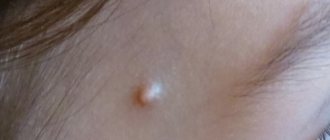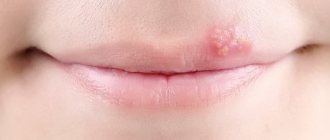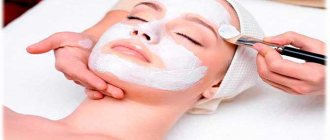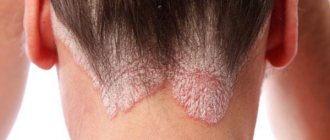What is vitiligo
Despite the fact that the phenomenon of vitiligo has been known for a long time, scientists still cannot agree on what causes its appearance. The number of people suffering from this disease is about 6-7% of the entire world population.
The disease is characterized by the appearance on the skin of pale, light milky spots, completely devoid of pigmentation. Over time, they enlarge, forming large areas of discoloration.
The word vitiligo is derived from the Latin “vitium”, translated as a brand or mark. Historians testify that mention of this disease is found in many ancient books. In them, people with depigmented skin are either considered messengers of heaven, or, on the contrary, are presented as servants of dark forces.
Before 1842 (the official date of recognition of the disease), vitiligo was often confused with leprosy and other contagious skin diseases.
But, unlike them, these lesions of the integument in most cases are not accompanied by unpleasant sensations. Only 10% of respondents claim that they feel itching at the site of the spots.
Classification of vitiligo
There is no international, officially accepted classification of the disease. However, depending on the location of areas devoid of pigmentation, vitiligo is divided into the following types:
| Type of disease | Description |
| Segmental (spots located on one side of the body) |
|
| Non-segmental | The generalized form is multiple lesions of the integument. Divided into:
|
| Non-deterministic (not falling into the standard classification by location) |
|
Usually the disease affects the skin, much less often the mucous membranes. As a rule, marks on the mucous membranes are not diagnosed in representatives of the Caucasian race, but the Negroid race suffers from this form of vitiligo much more often.
Treatment methods
Vitiligo on the scrotum or other part of the intimate parts must be removed by a doctor; treatment is selected individually in each specific case. It is not recommended to take any measures on your own, as many of them can be harmful. If you have vitiligo in the genital area, this is especially dangerous.
Such pathological areas are sensitive to negative effects; medications should not affect the functioning of the reproductive organs. There are many ways to even out your skin tone. In some cases, it is enough to simply “whiten” problem areas, in others it is necessary to increase pigment formation.
Melanin production can be stimulated surgically; melanocytes are transplanted from a donor or from the patient himself (from healthy areas) to problem areas. You can also use medications for this:
- Immunostimulants, for example, Immunal.
- Corticosteroids, such as Betamethasone.
- Photosensitizers.
- Vitamin complexes.
Medications for the treatment of vitiligo in the groin should be selected based on the reasons that caused them, the characteristics of the pathology, the patient’s age, etc.
To achieve a positive result, treatment must be comprehensive. The use of traditional medicine methods is allowed. However, you should consult a doctor about them, and use only proven medications.
Penile vitiligo photo
Since this disease is still poorly understood, it is very difficult to find a good specialist who can cure it completely and irrevocably. Most doctors consider it not dangerous to human life, and therefore do not attach much importance to the treatment of vitiligo.
But it not only represents a cosmetic defect of the skin that can ruin a person’s life, but also indicates possible serious pathologies in the patient’s body. You need to be especially careful when depigmented spots appear in babies.
They may indicate serious disturbances in the child's development. From the age of 4 years, treatment of vitiligo in children is completely identical to the treatment of adult patients.
Before this age, many doctors simply refuse to carry out any activities.
The main therapy is aimed at reducing the cosmetic defect and preventing the appearance of new lesions. For vitiligo, the following drugs are prescribed:
- Hormonal ointments that prevent the destruction of melatocytes (Protopic, Elidel).
- Melagenin, which stimulates melanin production.
This disease is treated with medications that increase the sensitivity of the epidermis to ultraviolet radiation. The depigmented spots are then irradiated with UV rays.
Complex therapy gives the best results. A dermatologist will not only prescribe the necessary treatment regimen depending on the patient’s age and condition, but will also refer for examinations to other specialists who will help more accurately determine the cause of the disease.
Complete cure of vitiligo is possible only if all accompanying pathologies are eliminated.
This disease is treated with antioxidants, which rid the body of free radicals, as well as immunomodulators, which strengthen the patient’s immune system. Recently, excimer laser and PUVA therapy (light therapy) have been increasingly used.
As a surgical treatment, melanocyte cells, which are grown artificially in the laboratory, are transplanted into the vitiligo lesion. Despite the effectiveness of such treatment methods, they are characterized by their high cost and frequent relapses of the disease.
What does skin affected by vitiligo look like?
Skin lesions are characterized by the appearance of depigmented spots. They are milky white or ivory in color. Their shape is very diverse, but the boundaries are always clearly defined. At the edges of the area, there is usually a thickening of pigment, making the contrast between healthy and affected skin even more noticeable.
Vitiligo has no other symptoms other than external manifestations.
Spots can appear on any part of the body. But there are areas that are affected more often than others. These include feet, elbows, knees, fingers and toes. Scientists cannot name the reasons why these places are more susceptible to the disease. One version, which is still unproven, claims that white marks appear more often on those areas of the skin that are more often exposed to sunlight.
Most commonly affected areas:
- facial skin (the area around the nose and mouth);
- fingers and toes;
- armpits;
- groin area;
- skin around the nipples;
- genitals;
A couple of depigmented spots that appear on one of these areas are not a reason to panic. Not all cases of vitiligo take on a progressive form. There is a chance that the stains will not begin to spread. However, no specialist can predict the course of the disease.
Therapeutic measures
Treatment is selected individually by the doctor after the examination has been completed. It is not advisable to take any measures on your own, since there is a possibility of harming your own body. This is especially dangerous if you have vitiligo in the genital area. These areas of the body are sensitive to adverse effects, so all medications used should not create additional problems with the reproductive organs.
Evening skin tone is done in different ways. In some cases it is easier to bleach healthy areas, in others it is to increase the level of pigment formation in the area of white spots. Bleaching is done using bleaching agents (for example, MBEG ointment). Pigment production can be stimulated surgically by transplanting melanocytes from a donor or from healthy areas of the patient’s body. Medications are also used for this:
immunomodulators (Immunal);
- corticosteroids (Betamethasone);
- photosensitizers (Beroxan);
- glucocorticoids (Clobetasol);
- vitamins (Vitrum).
Drugs for treatment are selected taking into account the characteristics of the disease and its causes. Each of these remedies is capable of neutralizing a specific factor that provokes the development of the disease. Most often, complex treatment is prescribed using several drugs that act in different directions.
The use of traditional medicine is also allowed, but you should only use proven recipes and only when their use has been approved by a specialist. These medications must be combined with other means of influence - only in this case will it be possible to achieve the necessary results.
Causes of the disease
What causes vitiligo and its symptoms and how can you get rid of them? A number of versions have been put forward that would explain the reasons why melanin disappears in skin cells. This is the pigment that is responsible for the color of the integument. The appearance of depigmented, white areas of the skin is a consequence of the disappearance of melanin.
Today it is reliably known that the disease is not associated with any causative agent of infectious diseases known to science. Neither viruses nor bacteria cause the appearance of localized depigmented areas.
Vitiligo is a non-infectious disease and cannot be contracted.
Possible causes of vitiligo:
- Genetic abnormalities
. It has been observed that children whose parents suffer from this disease show symptoms much more often than other people. - Autoimmune changes
. Malfunctions in the functioning of the immune system lead to the fact that produced antibodies, instead of destroying harmful objects, attack their own healthy cells. - Endocrine disorders
. There has been a connection between changes in hormonal levels and the onset of the disease. - Skin injuries
. Depigmented areas often develop at the site of burns and scars.
In half of the known cases, the disease affects people under 30 years of age. Most often, the disease manifests itself in childhood, accompanying endocrine and autoimmune pathological changes.
Description
Vitiligo is a chronic skin disease in which there is the formation of areas of depigmented dermis that are milky white in color. In medical practice, the disease is often called leukoderma, which reflects the main symptom of this pathology - the appearance of areas of skin in which the melanin pigment is practically absent. Not only the skin, but also the hair growing on the affected part of the body is subject to bleaching.
Vitiligo in a child under 10 years of age is rare, although in general the disease is quite common. According to statistics, from 0.5 to 1% of the world's population are susceptible to various forms of this disease. Young women are more often affected, but in general the disease can manifest itself in almost any person.
There are many options for treating this disease and masking the cosmetic defect, but it is not known exactly how to get rid of vitiligo. The effectiveness of treatment largely depends on the individual characteristics of the patient.
Some researchers believe that the main reason for the appearance of vitiligo is psychosomatics, that is, the reflection of mental pathologies on the functioning of the body.
Diseases similar to vitiligo
Dermatology knows many diseases that manifest themselves, like vitiligo, in the form of white spots. However, only vitiligo is not accompanied by any other symptoms. Most other diseases are accompanied by itching, redness of the skin, and peeling of the affected areas.
Diseases with similar symptoms:
- Leprosy
. The marks that appear when the skin is affected by leprosy are very similar to the symptoms of vitiligo. However, leprosy lesions significantly lose their sensitivity, which is easy to check with a regular needle. In other forms of leprosy, for example, spotted leprosy, inflammation, on the contrary, is manifested by increased sensitivity of the skin. Foci of infection in vitiligo do not bring any discomfort to the patient. - Ringworm
. Inflammations that appear with lichen are heterogeneous in color - from milky white to dark pink. When a scraping is taken, a layer of dead skin is easily removed from them, while vitiligo lesions do not peel off. - Leucoderma caused by syphilis
. Manifested by the formation of white dots. However, this disease is accompanied by multiple foci of inflammation on the mucous membranes.
Disturbances in certain metabolic processes in the body, for example, deficiency of selenium and copper, cause similar symptoms. A blood test can easily determine the cause of depigmentation.
Causes and mechanisms
Vitiligo refers to hypochromia (decreased skin pigmentation) due to the lack of melanin. This is always a secondary or acquired process, the causes of which are completely unknown. Of particular importance is the genetic inheritance of deficiency of tyrosinase, which catalyzes the synthesis of melanin. Other factors are also involved in the appearance of vitiligo in intimate areas:
- Neuroendocrine disorders.
- Autoimmune disorders.
- Psycho-emotional stress.
- Diseases of the digestive system.
- Injuries and burns (including sunburn).
- The influence of drugs and cosmetics.
There is also an assumption about a deficiency in the body of certain minerals (copper, zinc, selenium), viral infections and intoxications. Some consider vitiligo a signal of trouble in the body, but many do not attach much importance to it, considering it solely as an individual feature.
Vitiligo on the genitals is associated with a disruption in the formation of the natural pigment in the skin - melanin. Various conditions and factors contribute to this, but the true cause still remains unknown.











